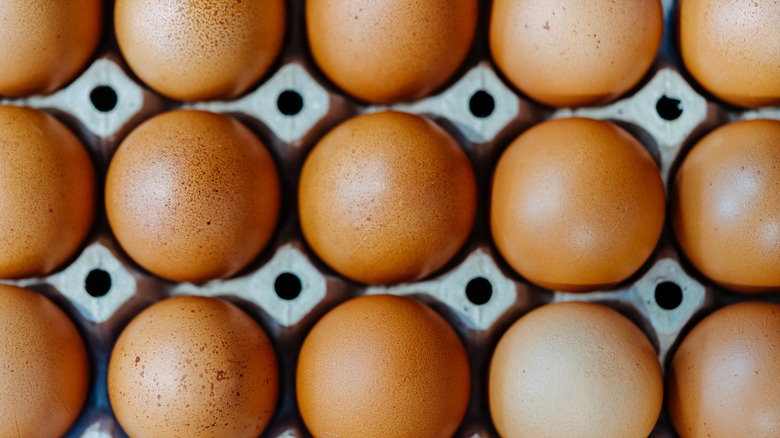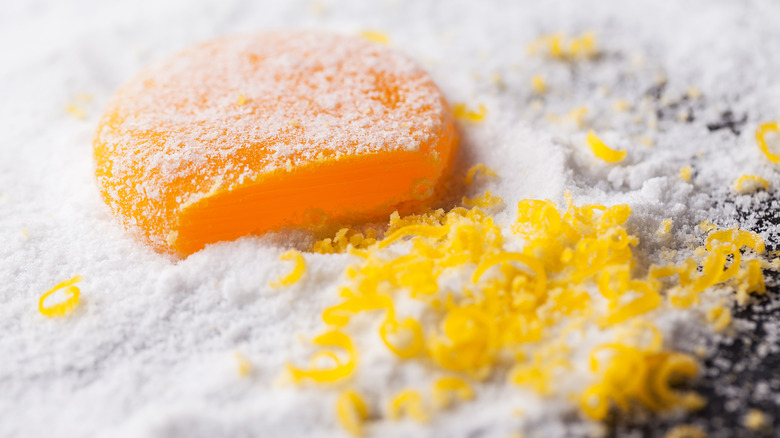This Ancient Technique Cures Egg Yolks With Salt And Sugar
Eggs may very well be the most versatile ingredient out there. Their culinary flexibility is unrivaled, as they can be enjoyed in anything from omelets to cakes to egg drop soup. Even outside of the kitchen, eggs have a seemingly unending list of uses. Slow Food reports that eggs are used for skincare, fertilizer, pest repellent, and even leather cleaner.
This isn't a recent phenomenon: Eggs are a significant part of our culinary history, with the famed Auguste Escoffier publishing an astounding 143 egg recipes in his 1903 classic, "Guide Culinaire" (via The Paseo Club). Moreover, The Incredible Egg says that records show birds laying eggs for human consumption in China and Egypt as early as 1400 B.C., adding, "Since birds and eggs preceded man in the evolutionary chain, they've existed longer than historians." So, eggs have been a part of our history even before we were alive! Speaking of history, this ancient egg technique allows you to use up leftover yolks for the next time you, you know, whip up homemade meringue.
Salt and sugar cured yolks are umami bombs
For those looking for a luxurious pasta topping besides Parmigiano-Reggiano or toasted breadcrumbs, one creative solution is a grated cured egg yolk. Dating back to the 5th century in China, according to Michelin Guide, salt curing duck eggs has been a culinary practice in the country for thousands of years. More recently, however, cured eggs have increasingly been making their way onto restaurant menus around the world since around 2014.
As for how to make this impressive ingredient, the technique actually couldn't be simpler. According to Bon Appétit, all you need is three ingredients (including the eggs!) and some time. Just mix (nearly) equal parts of salt and sugar together, and spread half of the mixture onto a sheet tray. Create little wells to gently rest the eggs in, then cover them with the rest of the mixture and refrigerate for four days. Some recipes have different curing times, so you can experiment based on your results. After a brief wait, you will be rewarded with firm, deeply savory yolks that you can use "almost like you would a hard cheese. You grate them over pasta, rice, or buttered toast. They add a nice and nutty, deeply umami flavor," as Molly Birnbaum, executive editor of science at America's Test Kitchen, told The Splendid Table.

